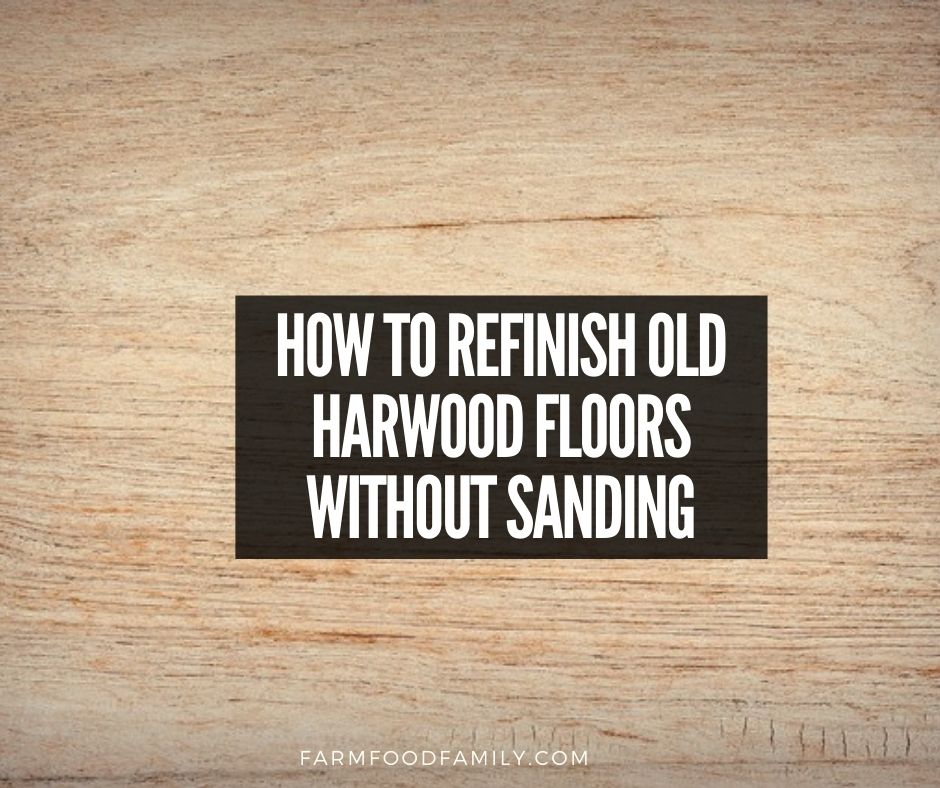Many old homes contain beautiful hardwood floors beneath lackluster carpeting installed during the wall-to-wall carpeting craze of the 1960s and 1970s.
The average DIY home renovator interested in putting some sweat equity into his or her home can remove this carpet and restore the original hardwoods with relative ease on any size budget.
Related: 19+ Different Types Of Carpets, Styles, and Pile Options (Buying Guide)

Related: Types of flooring
Tools Needed to Refinish Hardwood Floors
- needle nose pliers
- utility knife
- pry bar
- face mask
- stripper safe to use on hardwood
- plastic scraper
- rubber gloves
- sponges
- TSP
- wood filler
- flat head screw driver
- sand paper
- wood stain
- polyurethane
Pry Back the Old Carpet

The first step to restoring an older home’s former glory is to remove the carpeting currently covering the wooden gems that lie beneath. Most carpet installers use a stretch method in which they install a tacking strip around the perimeter of the room and stretch the carpet to cover it.
With a pair of needle nose pliers, begin in the corner, carefully prying back the carpet. This will provide the first glimpse at the quality and condition of hardwood flooring beneath. Once a piece of carpet becomes loosened from the tacking strips, the rest follows easily.
Remove the Carpet
Using a sharp utility knife, cut the carpet into strips no wider than three feet and roll the strip the length of the carpet. Carpeting becomes extremely heavy when rolled, so limiting the width to three feet allows most DIYers to carry it to the curb or the local dumpster themselves.
Safety note: Wear a cloth or paper mask over the nose and mouth, available from most local home improvement stores, when removing carpet to avoid respiratory problems.
Carpet fibers trap dirt, dust, and pet dander and hold these allergens for many years. The fibers will begin to release these allergens when the carpet is pulled up and cut. Those with sensitive skin should also wear gloves during this process.
Remove the Carpet Padding

After removing the carpet, tear away the newly revealed padding and tacking strips. The carpet pad will, most likely, be stapled around the edges, though some installers also staple the padding in the middle.
The carpet pad will tear away easily, but remove this slowly because the padding, just like the carpet, will retain dirt and dust from its many years in service.
Use needle nose pliers to remove staples from the floor by twisting them in a sideways rolling motion that will allow them to slide out of the wood. Remove any nails in the wood at this time using the same technique.
To remove the tacking strip, simply slide a pry bar beneath the strip using a hammer for placement and pull. Avoid scratching the wood by placing a flat, wide scraper beneath the pry bar and pliers.
Related: How to get slime out of a carpet
Remove the Old Finish
Most homes contain old quarter sawn boards, straight grain heart pine, or common red oak. Depending on the age of the home, these floors may be covered in several layers of varnish and were never stained.
Many home owners believe they must sand away the old finish from their floors to remove the original scratches, however, scratching typically occurs only in the top layers of finish on the floor and not in the wood itself.
Hardwoods are protected by multiple layers of varnish or polyurethane to prevent permanent damage to the wood beneath. A hardwood floor should only be sanded once during its lifetime. Each subsequent sanding removes layers from the floor and strips the fibers. Sanding should be used as a last resort, not a first.
To remove varnish, apply a layer of stripper to the floor. Locate stripper in the paint section of any home improvement store. Depending on the age of the floor and the varnish being removed, purchase a small container of mild stripper and test it in a corner of the room first.
Follow the directions on the stripper and apply following the grain of the wood, using plastic scrapers to scrape up the eroding varnish. If streaks occur, leaving patches of varnish on the floor, upgrade to the next strength of stripper.
Clean the Floor
Clean the floors of all stripper residue, dirt, and dust prior to applying the stain or new sealant with a trisodium phosphate compound, commonly known as TSP. Fill any holes or imperfections in the floor using a wood filler.
Apply the filler carefully, using a flat headed screw driver to lightly tamp the compound into the holes, ensuring that excess product is not left on the surrounding floor.
Use a medium grain sand paper to smooth the filler, remove sticky excess stripper that did not come up during the cleaning, and level any uneven areas of the floor. Do not over-sand any spots on the floor as these will soak up finish differently than the surrounding areas.
Apply New Finish
Once the floor has been stripped and cleaned, apply stain and polyurethane according to the manufacturer’s instructions. Be sure to use products from the same manufacturer for best results.
Allow the floor to cure for at least seven days before moving furniture onto it. Clean the floor regularly with liquids specifically designed to protect hardwood floors.
Related: Laminate vs hardwood flooring | Maple vs oak flooring | Pros and cons of pine flooring

